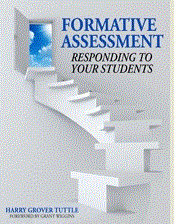We teach world languages so that our students can speak it yet we do not teach them how to speak. Students identify speaking in the foreign language as creating the most anxiety in language learning. Young, D. (1990). “An Investigation of Students’ Perspective on Anxiety and Speaking.” Foreign Language Annals. 23:539-553
Krashen explained the importance of input, students listening to us as we speak the target language; however, he stressed that comprehensible output is the goal of language acquisition. Krashen, S. (2003). Explorations in Language Acquisition and Use. Portsmouth: Heinemann.
The world language teachers’ overemphasis on input, their talking in the classroom, creates a myth of promoting student speaking.
I watched many Olympic swimming events. I watched for many hours. Can I swim any better now than before watching them? No!
I watch musicals on TV, go to musicals in theaters, and listen to choral groups. Can I sing any better now with all that input? No!
Every day I watch marathon runners go past my house early in the morning. Can I run faster and do a marathon from all their input? No!
Input provides the initial sounds, sentence patterns, etc. for students. However, students have to move to guided or scaffolded output so they can produce the sounds and, more importantly, the sentences to converse with one another. Students do not magically go from hearing our speaking to their conversing in the target language. We need to give them some assistance as they begin to put together sentences.
One technique is to provide the students with modern language sentences which contain choices. They select what they want to say from the available words/phrases. They say what is meaningful to them through the selection of words/phrases. They do create sentences on their own.
Scaffolded sentences provide a starting point for narrating and conversing. In one substitution exercise, the students change an underlined word to be true for them such as “I live in Syracuse.” For example, I have for Spanish students a “Tell Me about Yourself Activity” in which students say 13 changes, 22 or 34 changes to tell about themselves (Spanish Tell Me About Yourself Substitution Sentences). In another variation, the students change a word in over 30 questions such as “¿Te gustar jugar al béisbol?” in Spanish Conversation Questions Spontaneous Speaking Partners . Once students do these scaffolded sentences, they better understand how they can recombine sentences and questions to converse with one another. They move toward spontaneous speaking.
My Spanish spontaneous speaking activities (20+) includes Modified Speed Dating (Students ask a question from a card), Structured Speaking (Students substitute in or select words to communicate), Role Playing (Students talk as people in pictures or drawing) and Speaking Mats (Can talk using a wide variety of nouns, verbs and adjectives to express their ideas), Spontaneous Speaking (based on visuals or topics), and Grammar speaking games. Available for a nominal fee at Teacherspayteachers: http://bit.ly/tpthtuttle
My three formative assessment books: http://is.gd/tbook






